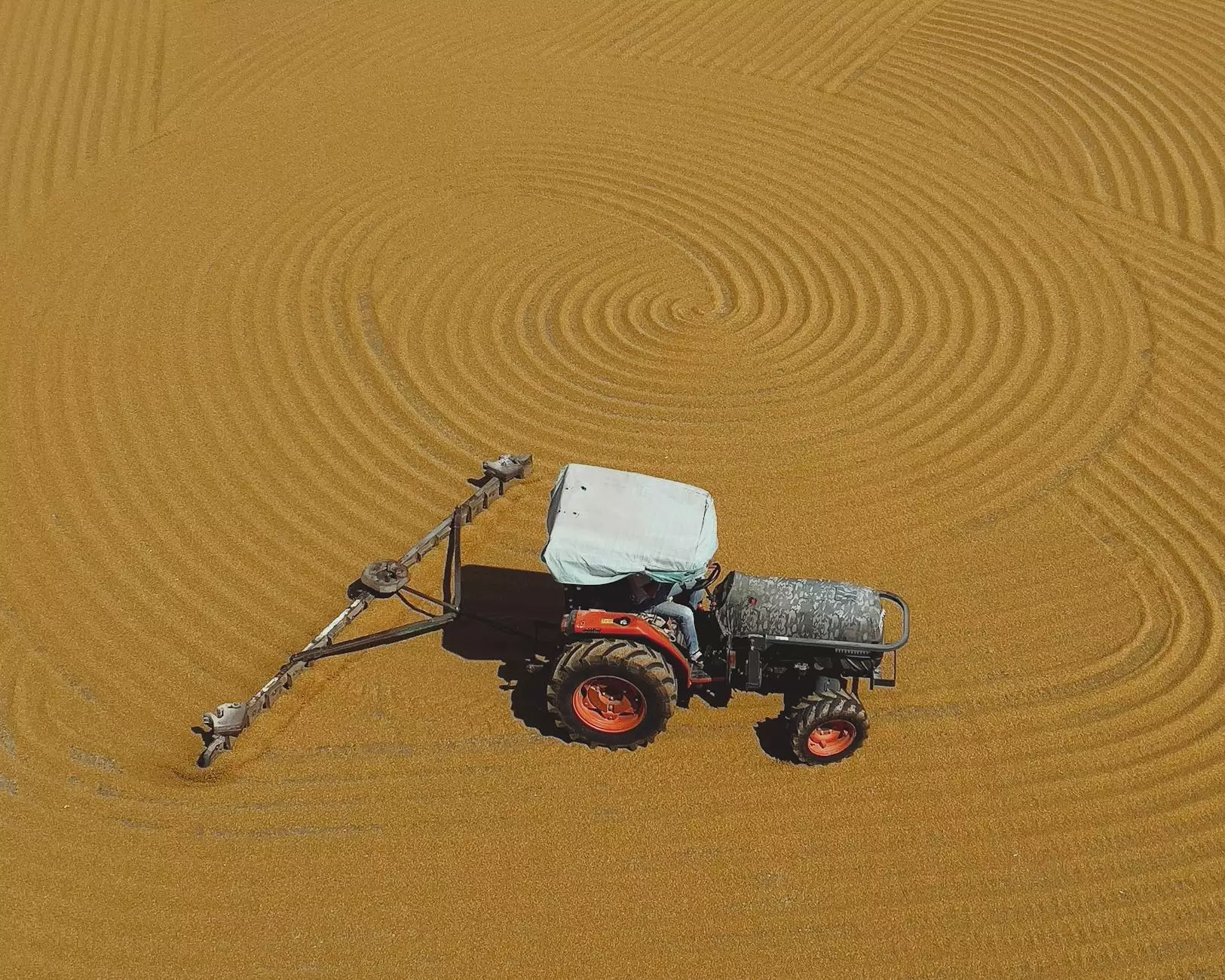Maximizing Grain Quality and Efficiency: Drying Grain with Ambient Air

Drying grain with ambient air is an essential practice in modern agriculture, particularly for farmers who strive to maintain product quality while minimizing losses and optimizing costs. Understanding this technique can significantly affect your overall farming strategy.
What Does Drying Grain with Ambient Air Involve?
Drying grain using ambient air refers to the process of utilizing natural environmental conditions, such as temperature and humidity, to reduce moisture content in harvested grains. This method helps to prevent spoilage and maintain the integrity of the grain, ensuring that it reaches the market in optimal condition.
The Importance of Grain Drying
Effective grain drying is crucial for several reasons:
- Prevent Spoilage: High moisture content can lead to mold growth and spoilage, resulting in significant financial losses.
- Maintain Quality: Proper drying preserves nutrients, flavors, and aromas, essential for market competitiveness.
- Enhance Storage Life: Drier grains are less susceptible to pests and decay, making them easier to store over extended periods.
- Improve Market Value: High-quality, well-dried grains fetch better prices, benefitting farmers economically.
Steps Involved in Drying Grain with Ambient Air
1. Harvesting
The process begins with the careful harvesting of grain. Harvesting at the right time — when the moisture content is optimal — can significantly impact the drying process. Aim to harvest when grain moisture levels are around 20-25%, as this provides a balance between quality and the need for drying.
2. Preparation for Drying
Post-harvest, the grains should be cleaned to remove any debris, dust, or damaged kernels. This step is vital as it helps to enhance airflow and reduces the risk of contaminants causing spoilage during the drying phase.
3. Utilizing Ambient Air
This stage involves allowing the grains to be exposed to ambient air. Here are several methods to effectively use ambient air for drying:
- Outdoor Air Drying: Spread the grains in thin layers on drying beds or tarps in open areas. The ambient air will circulate and facilitate the drying process, especially during sunny days.
- Ventilated Silo Systems: Some farmers invest in storage systems equipped with ventilation to increase airflow around the grains, speeding up moisture removal without exerting additional energy.
- Natural Airflow Utilization: Position grains in areas where wind passes, thereby harnessing natural breezes to promote drying. This method is extremely cost-effective and environmentally friendly.
4. Monitoring Drying Conditions
Throughout the drying process, it’s essential to monitor humidity levels and temperature closely. This data can assist in determining when the grains have reached the desired moisture content, typically around 12-14% for safe long-term storage.
5. Storage After Drying
Once drying is complete, store grains in a cool, dry place to maintain their quality. Proper storage facilities will help sustain low moisture levels, reducing the risk of spoilage during storage.
The Benefits of Ambient Air Drying for Farmers
Employing ambient air for drying grain comes with several advantages:
- Cost-Effective Operation: It minimizes energy costs associated with traditional grain drying methods, such as gas or electric dryers.
- Environmentally Friendly: Utilizing the natural environment reduces carbon emissions associated with other drying techniques, which aligns with sustainable farming practices.
- Reduced Risk of Over-Drying: When controlled carefully, using ambient air significantly reduces the risk of damaging the grain through excessive heat.
Best Practices for Effective Ambient Air Drying
To maximize the effectiveness of drying grain with ambient air, consider the following best practices:
- Choose the Right Season: Spring and fall are typically the best times for ambient air drying, as humidity levels are often lower, and air temperatures are more favorable.
- Adjust Layer Thickness: Keep grain layers thin to allow for better airflow and uniform drying.
- Utilize Climate-Smart Techniques: Be flexible and ready to adapt your drying strategies based on changing weather conditions.
Challenges Associated with Drying Grain with Ambient Air
While there are numerous benefits, there are also challenges to consider when drying grain using ambient air:
- Weather Dependency: Drying efficiency is highly dependent on weather conditions; unexpected rain or high humidity can delay drying.
- Time-Consuming: Ambient air drying generally takes longer than other methods, requiring patience and careful planning.
- Quality Control: Farmers must monitor quality closely since prolonged exposure to less than ideal conditions can trivialize the advantages of low-cost drying.
Conclusion: The Future of Grain Drying
In conclusion, drying grain with ambient air stands out as a cost-effective and environmentally friendly method for preserving the quality of grain. The technique's increasing popularity reflects a larger movement towards sustainable agricultural practices. By carefully implementing best practices and monitoring conditions, farmers can harness the full potential of this method and ensure high product quality while operating efficiently.
As the industry evolves, continued innovation and education will be essential for farmers looking to enhance their drying techniques, with ambient air drying taking center stage in many discussions about future agricultural sustainability.
About TSGC Inc.: Your Farming Equipment Partner
At TSGC Inc., we understand the challenges faced by farmers today. Specializing in farm equipment repair and farming equipment, we are dedicated to providing quality services that help optimize your farming operations. Our team is here to assist you with your equipment needs, ensuring you're equipped for effective grain management and beyond.
Empower your farming business with thoughtful strategies for grain management, and consider us your go-to resource as you evolve to meet future challenges.









